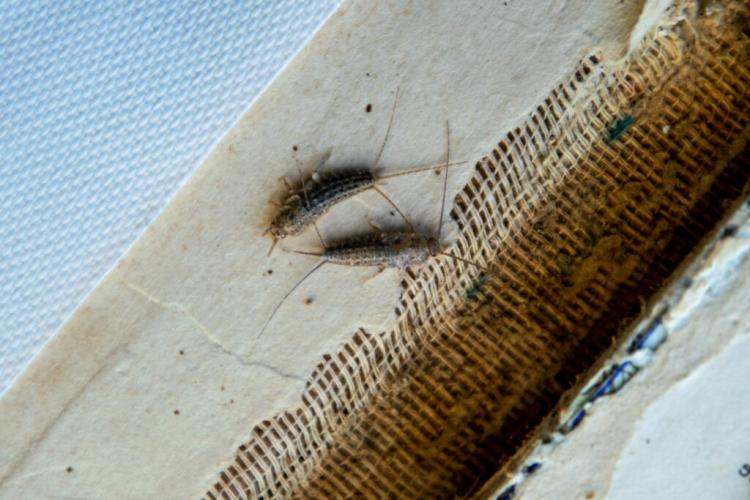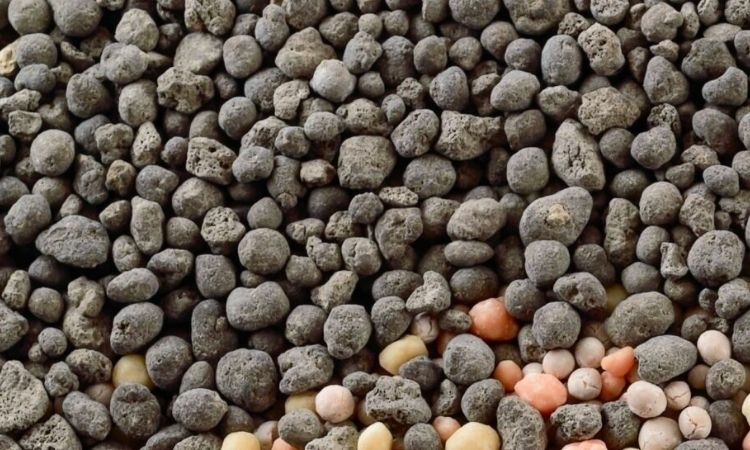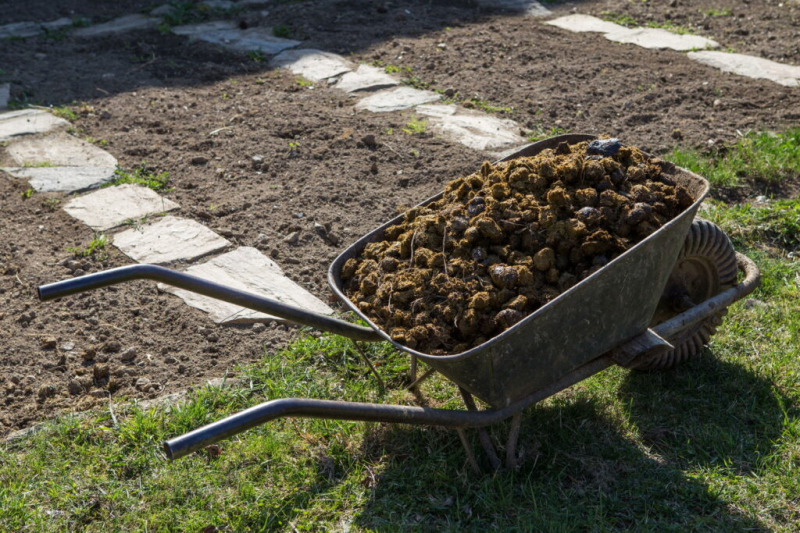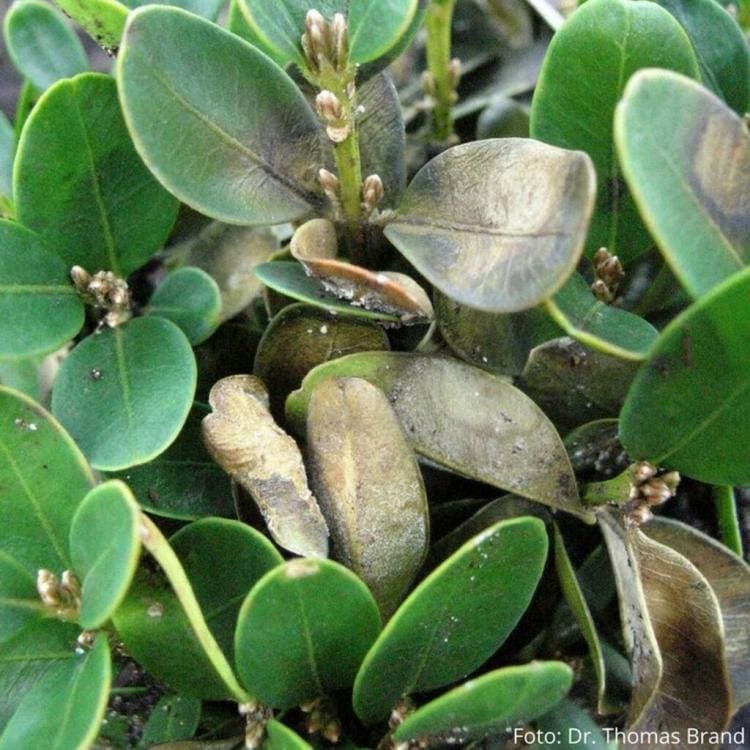Cabbage White Butterfly: The Butterfly Caterpillar
Whether the caterpillar of the pest is poisonous, what development it is going through, and how to control the cabbage white butterfly, you will find out below.
The cabbage white butterfly eats the leaves of white cabbage, pointed cabbage, cauliflower, kohlrabi and various other types of cabbage that should actually end up on our plate. Despite the aesthetics of the white butterfly, vegetable gardeners want a sure remedy against the insatiable caterpillars. We have compiled all the important information about the cabbage white butterfly for you so that nothing stands in the way of effective prevention and control.
After a brief profile of the cabbage white butterfly, you will find information on the development and toxicity of the white butterfly in this article. We then go into detail about effective preventive measures and ways of combating them with home remedies, chemical and biological agents.
Recognize cabbage white butterfly: profile
Table of Contents
In the following table you will find the different stages of development, occurrence and damage pattern of the cabbage white butterfly.
| Taxonomy | Family Piridae , genus Pieris |
| Occurrence | North Africa to Northern Europe, with us from the North German lowlands to the Alps |
| Forage plants | Various cruciferous vegetables ( Brassicaceae ), which also include our cultivated cabbage varieties, rarely other plants |
| Butterflies | White to yellowish in color, wingspan of a maximum of 6.5 cm, with a black spot on the tip of the forewings; diurnal, pollinate various wild and garden plants |
| Eggs | Bright yellow on the underside of the leaves of the forage plants |
| Caterpillars | Green-yellow, with patterns of black spots and speckles; Body is hairy short, not more than 4 cm long |
| Damage image | Start with pitting, if the infestation is severe, whole leaves are skeletonized; partly feeding on cabbages |
| Doll | The so-called belt puppets hang freely on trunks or walls |
Cabbage white butterfly: poisonous caterpillar?
When eating cabbage plants, the caterpillars of the cabbage white butterfly ingest various substances that are poorly tolerated by humans in large quantities, such as mustard oil glycosides. If these are split in the course of the caterpillar’s metabolic processes, poisonous substances such as isothiocyanates are formed. These irritate the mucous membranes and have a negative effect on the production of thyroid hormones.
The caterpillars of the cabbage white butterfly contain these isothiocyanates, which makes them inedible for many predators. They themselves are immune to their effects. For humans, the substance is only toxic in much higher concentrations, so that touching and even eating the caterpillars in small amounts would be just as harmless as eating cabbage – because our bodies also produce various, slightly toxic breakdown products when it is consumed.
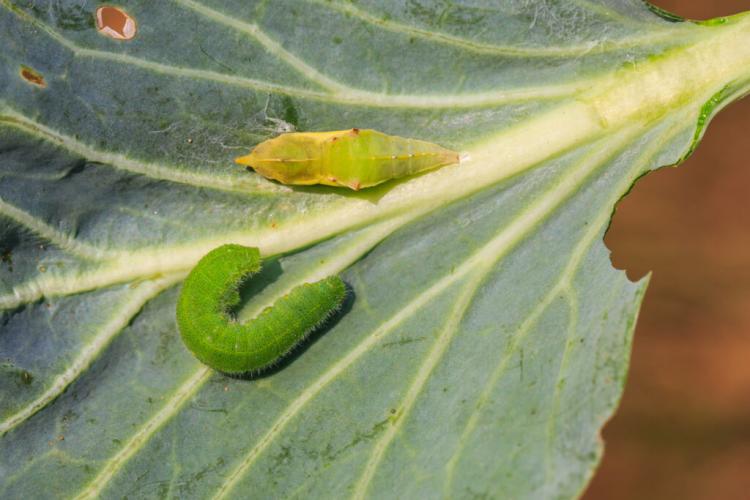
Tip large and small cabbage white butterfly : The large cabbage white butterfly ( Pieris brassicae ) and the small cabbage white butterfly ( Pieris rapae ) are visually very similar, but show differences in their distribution, food spectrum, and feeding behavior. The Pieris rapae caterpillar is also known as the “heartworm” because it likes to eat its way into the inside of cabbages.
In addition to cruciferous vegetables, the small cabbage white also infects leeks, capers, candytuft and rocket. Due to the broader food spectrum, the small cabbage white butterfly is somewhat more widespread than the large cabbage white butterfly, whose diet is based more exclusively on the cabbage family. However, since the harmful effect and control are largely the same, no distinction is made between the species below.
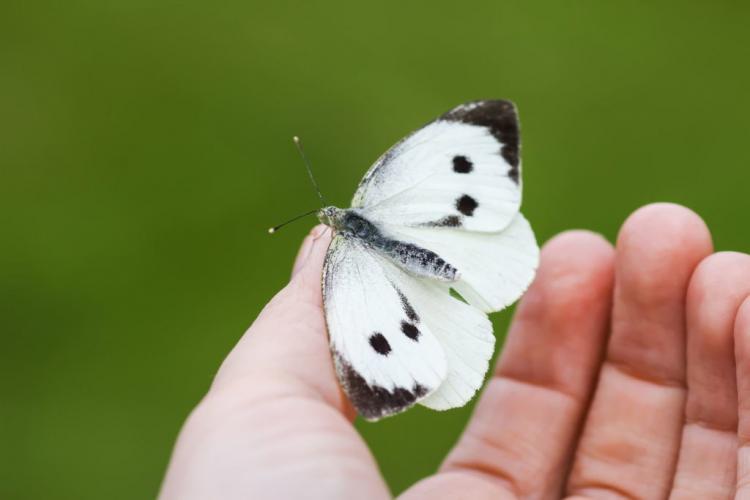
Cabbage white butterfly: development
In Germany there are two to four generations per year, the first moths fly between April and June, the last in October at the latest. After the eggs have been laid, it takes about 14 days for the caterpillars to hatch and then attack the foliage of the forage plant. The main damage usually occurs in June and July. Pupation takes place after three to four weeks of eating. The last generation winters in this form.
Prevent cabbage white butterfly
You don’t have to wait for an infestation to protect your plants: some preventive measures will help keep the cabbage white butterfly away.
- Plant mixed crops instead of growing large areas with potential forage crops.
- Make sure that the crop rotation is correct.
- Strongly scented plants between the cabbage plants are supposed to distract the cabbage white from the smell of cabbage: Thyme, mugwort, anise, tansy, sage, peppermint, tomatoes and extracts from these plants are supposed to help.
- The creation of beneficial habitats reduces the pressure of infestation: many songbirds devour the cabbage white butterfly’s butterflies and native parasitic wasp species parasitize the caterpillars and eggs.
- Look for eggs under the leaves of the forage plants as soon as you spot the white butterflies in your garden. In this way, a strong infestation can be prevented through early action.
- Eggs and caterpillars can be collected if there is little infestation or small areas.
- The cultures can be covered with nets in good time – i.e. before the moths fly. The mesh size should be a maximum of two millimeters and the nets must not have any holes.
Tip: If the covering with nets did not take place until after the butterfly flight, the cultures must be regularly checked and collected or treated.
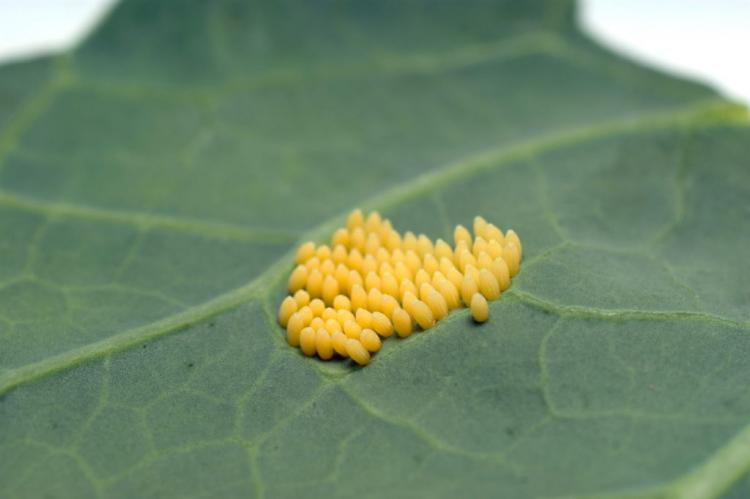
Combat Cabbage White
You can fight the cabbage white butterfly with household remedies, chemical or biological pesticides.
Biologically control cabbage white butterfly
A biological control of the cabbage whites is possible on the one hand with targeted beneficial insects, on the other hand with agents based on the bacterium Bacillus thuringiensis . Basically, the earlier you start combating, the less damage will be to your plants. The caterpillars of the small cabbage white butterfly also eat their way into the heads of cabbage and from this point on they can no longer be reached by plant protection measures.
The cabbage white ichneumon wasp Cotesia glomerata is a useful insect. It parasitizes the free-eating larvae of the great cabbage white butterfly and kills them. It is quite specialized, the species Pieris brassicae is preferred to all other butterflies and also to the small cabbage white butterfly. The latter has its own main parasite: the ichneumon wasp Cotesia rubecula . Both species are used in the professional field to control cabbage white butterflies, but are hardly available for private users. However, since they are native to us and are attracted by the smell of the cabbage plants, the design of your garden to promote beneficial organisms is also recommended as a powerful weapon against the cabbage white butterfly.
Another useful insect parasitizes not the larvae, but the eggs of both species of cabbage white butterfly: namely the parasitic wasps of the genus Trichogramma. Sets are available with eggs of different species, which then take action against several harmful butterflies. Trichogramma species lay their own eggs in the eggs of the butterflies and the hatching larvae then feed on its contents.
Tip: Unfortunately, the use of parasitic wasps in the wild is often not efficient. The small brackish wasps migrate, are driven off by strong winds or eaten by other insects and birds. Use in the greenhouse, on the other hand, is much more effective.
Insecticides based on Bacillus thuringiensis have proven themselves as biological agents in the field. Permanent forms of the bacterium can be kept for a long time as a water-soluble powder and can be mixed with a little liquid to form a spray mixture. This is simply sprayed onto the forage plants of the cabbage white butterfly. The spray coating should be renewed after rainfall and heavy plant growth.
The effect of these agents is extremely gentle on beneficial organisms: the bacterial spores have to be absorbed by feeding and develop their toxic potential only in the presence of certain enzymes that are found in the intestines of the target organisms – and not in any other insect intestines. Our Gardender borer-free contains exactly the strain of Bacillus thuriengiensis that combats the cabbage white butterfly. It is very easy to use.
Use of our Gardender borer-free against the cabbage white butterfly:
- If you observe caterpillars or damage caused by eating, you should wet all host plants with the mixed Gardender Borer-free – also do not leave out the inner areas and undersides of the leaves
- Use the agent at outside temperatures of at least 15 ° C
- With a portion bag, you can treat about 33 m2 with a plant height of 50 cm
- The application is ideally carried out with a spray bottle and when there is no wind
- Our Gardender borer-free is harmless to humans; However, please note the information on safe use given in the instruction leaflet
Combat cabbage white butterfly chemically
Various chemical agents for combating cabbage whites are permitted in the home garden. Some use the active ingredient azadirachtin, which can be isolated from the neem tree and is harmful to various insects – most of which serve as beneficial insects. We assume that no responsible gardener would want to distribute one of these poisons in his garden, so we will not go into their application.
Fight cabbage white butterfly with home remedies
Unfortunately, if the infestation is serious, no home remedies are suitable for saving your cabbage harvest. For this reason, the preventive use of the tips above is particularly important at a sufficiently early stage. Because moths and caterpillars occur during the entire growing season, you can in principle use these preventive measures during the entire cultivation period.

The cabbage white butterfly is not the only pest that likes to eat cabbage plants in the garden – the cabbage fly can also really damage your cabbage harvest.
You might so like:

